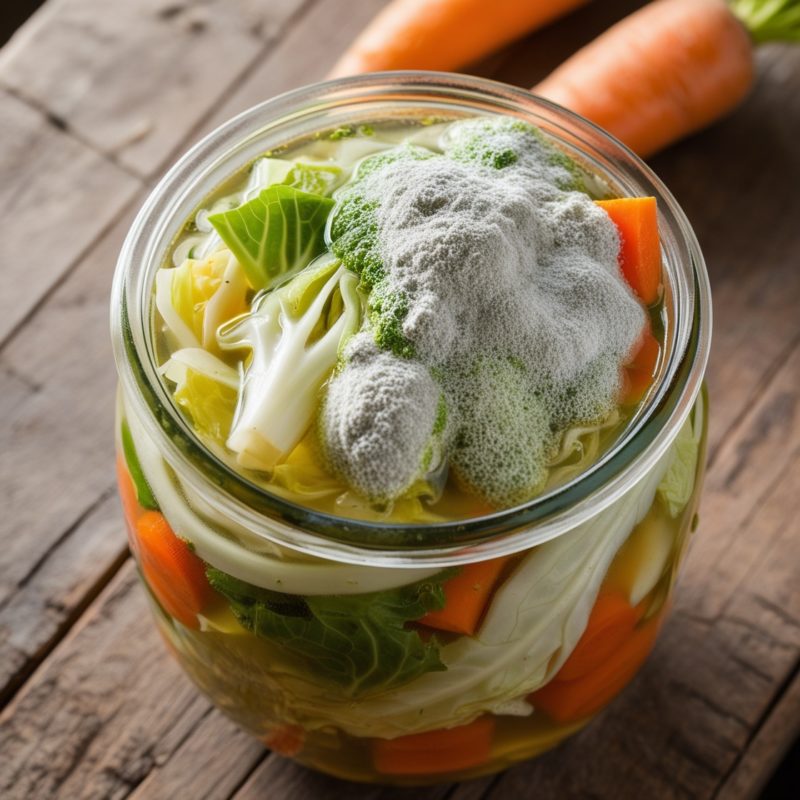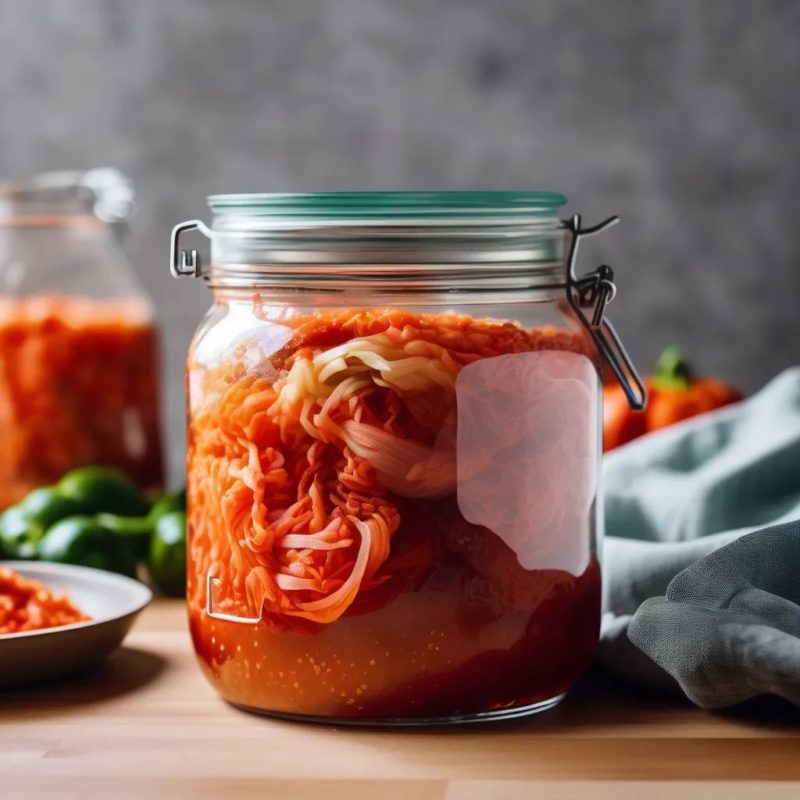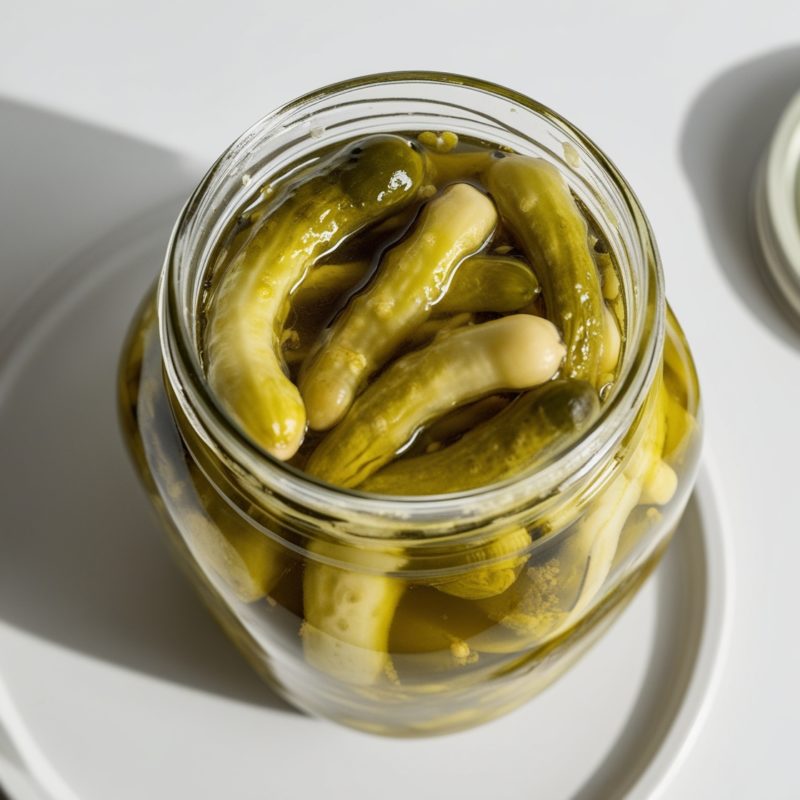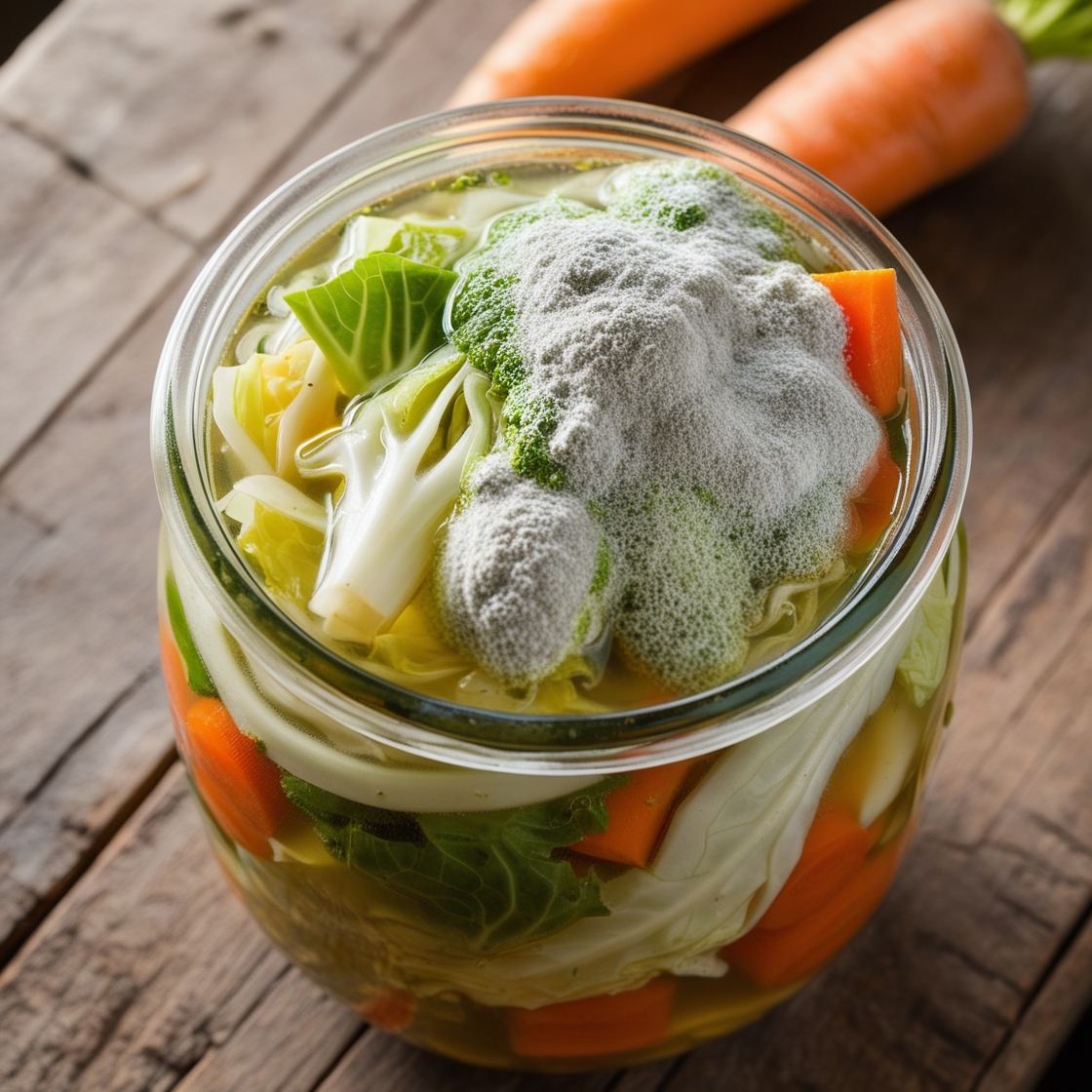Introduction
Fermentation is a time-honored method for preserving and enhancing food, but even experienced fermenters can encounter issues. Whether you’re new to fermentation or experimenting with a new recipe, understanding common fermentation problems and how to solve them can make all the difference in your success. This guide covers the most frequent fermentation issues and provides practical solutions to help you create safe and delicious fermented foods.
1. Mold Growth
Problem:
Mold is a common issue in fermentation, particularly if the fermenting vegetables are exposed to air. Mold can appear as white, green, blue, or black fuzzy spots on the surface.
Solution:
- Ensure Proper Submersion: Always keep your vegetables fully submerged in brine to prevent mold. Use fermentation weights to press down the contents.
- Remove Mold Safely: If mold forms, carefully scrape it off. If mold has spread extensively, it may be best to discard the batch.
- Use an Airlock: An airlock fermentation jar prevents air from entering while allowing gases to escape, reducing mold risk.
Read more: How to Prevent Mold in Fermentation

2. Bad Smell
Problem:
Fermentation naturally produces strong odors, but if your ferment smells foul—like rotting garbage or sulfur—it could indicate a problem.
Solution:
- Check Ingredients and Recipe: Ensure you’re using the correct salt-to-water ratio and fresh ingredients.
- Temperature Control: Maintain a stable fermentation temperature (60-75°F/16-24°C). Too hot or too cold temperatures can lead to spoilage or off-flavors.
- Ventilation: Keep your fermentation space well-ventilated. If the smell is rotten, discard the batch.
Related: Understanding Fermentation Odors
3. No Bubbling in Fermentation
Problem:
Bubbling is a sign that fermentation is active. If there’s no bubbling, fermentation may not be occurring correctly.
Solution:
- Temperature Check: Fermentation may be too slow if the environment is too cold. Move the ferment to a warmer spot.
- Give It Time: Some ferments take longer to show activity. Be patient and wait a few more days.
- Use a Fresh Starter: Ensure your starter culture is active. An inactive starter can cause a stalled fermentation.

Explore: Signs of Successful Fermentation
4. Slimy Texture in Fermentation
Problem:
A slimy texture in fermented vegetables is often due to improper fermentation conditions, such as low salt levels or high temperatures.
Solution:
- Correct Salt Levels: Use the recommended salt ratio (2-3% by weight) to prevent sliminess.
- Maintain Cool Temperatures: Keep the fermenting environment cool and consistent to avoid unwanted bacterial growth.
- Use Fresh Vegetables: Fresh ingredients are less likely to result in a slimy texture.
Learn More: Avoiding Slimy Vegetables in Fermentation

5. Fermentation Too Sour or Not Sour Enough
Problem:
The flavor of your ferment might be too sour or not sour enough, depending on the fermentation time and temperature.
Solution:
- Adjust Fermentation Time: A longer fermentation leads to a more acidic taste. For less sourness, shorten the fermentation time.
- Taste Regularly: Monitor the flavor by tasting your ferment regularly. Stop when it reaches your desired level of sourness.
- Storage Tip: If the ferment is too sour, rinse the vegetables before eating or mix them with fresh ingredients to balance the flavor.
Check Out: Controlling Fermentation Flavor
6. Mushy or Soft Fermented Vegetables
Problem:
Mushy or soft textures in fermented vegetables are usually due to low salt, warm temperatures, or over-fermentation.
Solution:
- Increase Salt Content: Use the correct salt ratio to maintain the crispness of your vegetables.
- Ferment at Cooler Temperatures: Avoid high temperatures that speed up fermentation and lead to mushy textures.
- Shorten Fermentation Time: Check the texture earlier in the process and adjust the time accordingly.
Discover: Tips for Crispy Fermented Vegetables
7. Using Tap Water in Fermentation
Problem:
Chlorinated tap water can inhibit the beneficial bacteria needed for successful fermentation.
Solution:
- Use Filtered Water: Opt for filtered, distilled, or non-chlorinated water for fermentation.
- Dechlorinate Tap Water: Let tap water sit uncovered for 24 hours to allow chlorine to evaporate, or boil it and cool it before use.
Read: Best Water for Fermentation
Conclusion
Fermentation is a rewarding and versatile process, but it can come with challenges. By understanding and addressing these common fermentation problems, you can ensure your ferments are safe, successful, and delicious. Practice makes perfect, and with each batch, you’ll gain confidence and skill in the art of fermentation. Happy fermenting!
Explore More Fermentation Tips and Tricks
This site is a participant in the Amazon Services LLC Associates Program and contains affiliate links to products. We may receive a commission for purchases made through these links.

[…] For tips on preventing mold during fermentation, check out our article on The Best Techniques for Preventing Mold in Fermentation. […]